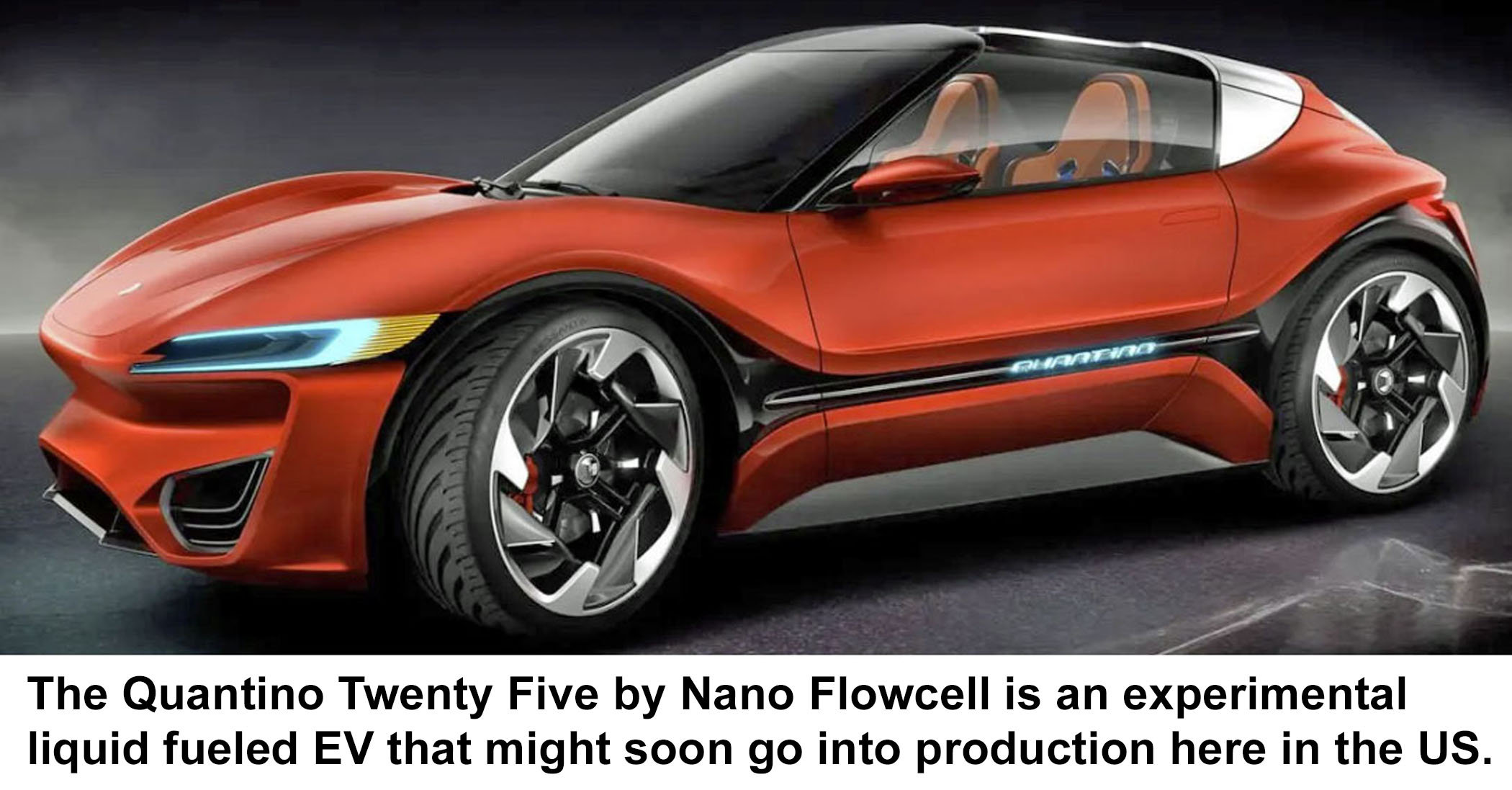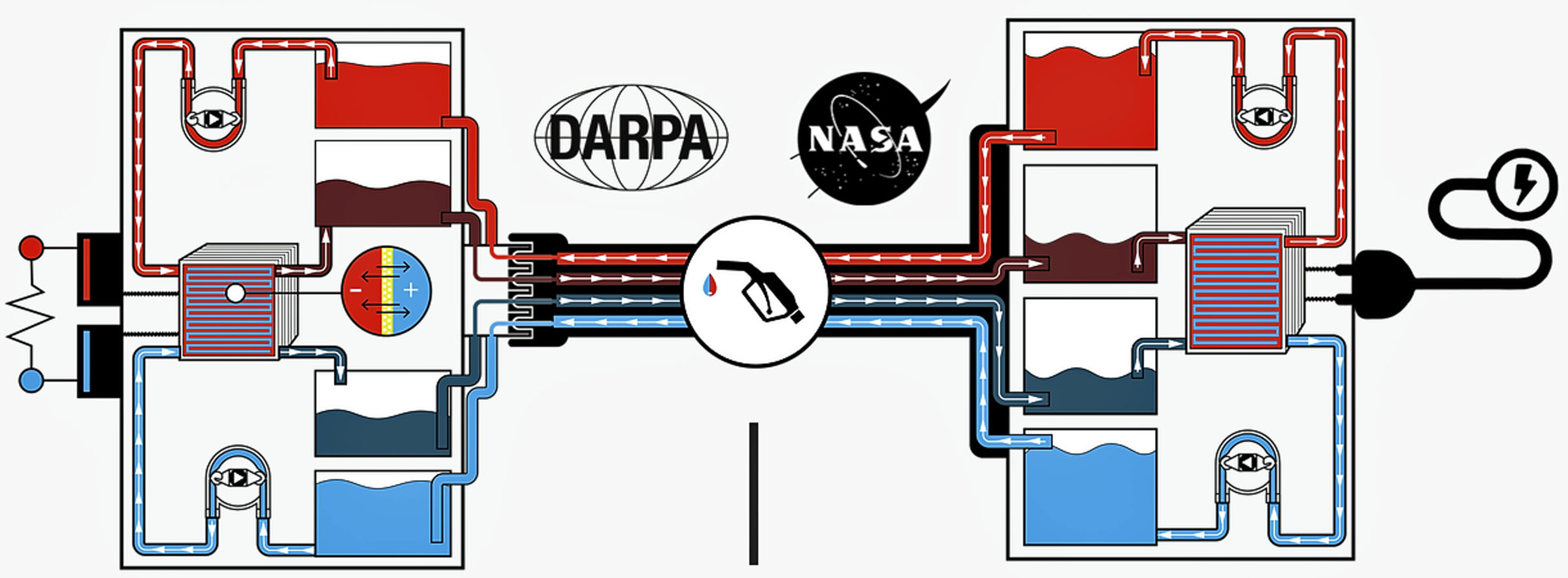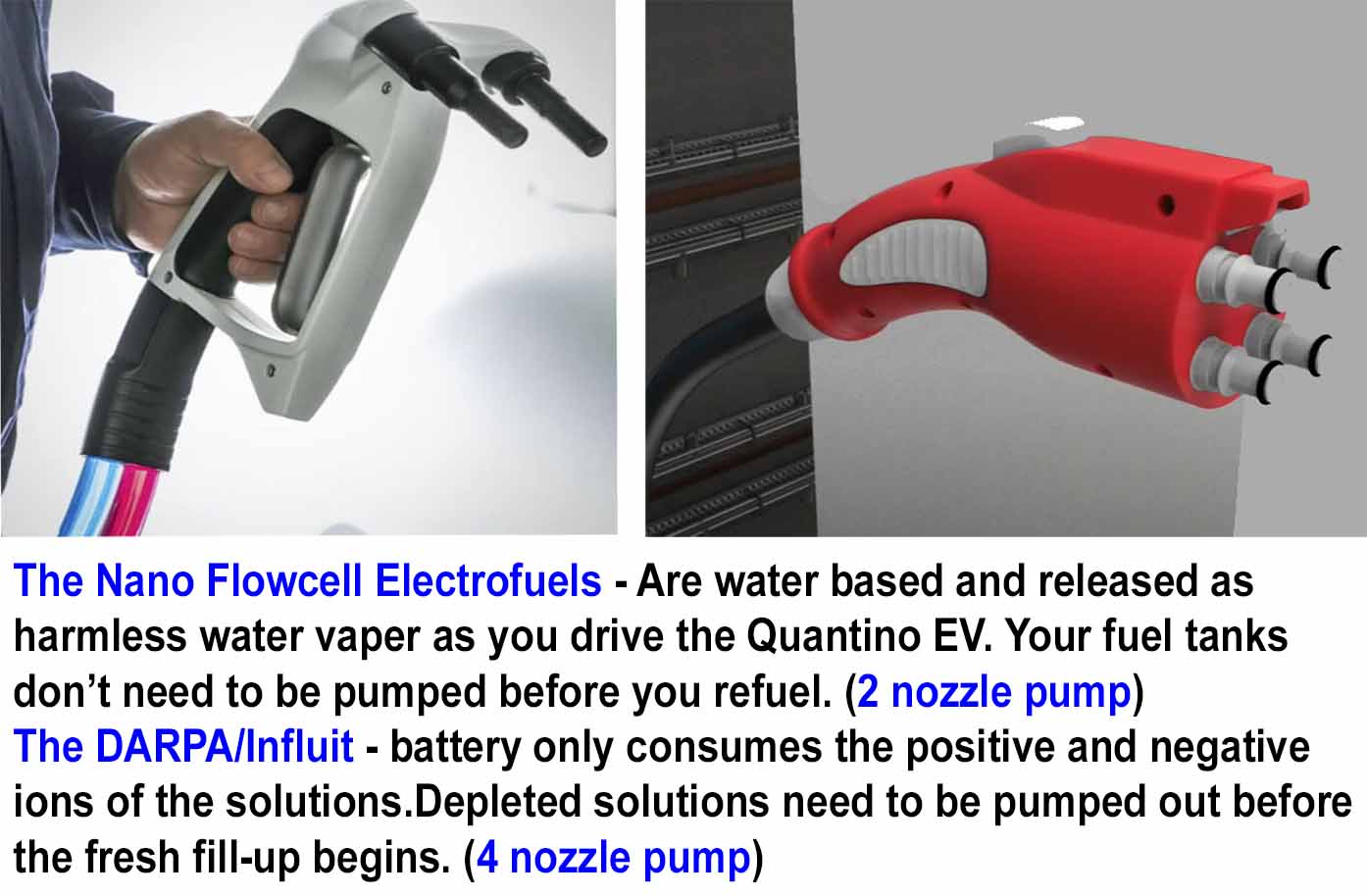

The Liquid Fueled Electric Car
March - April 2024

Recent laboratory breakthroughs at the US Defense Advanced Research Projects Agency (DARPA) Office of Strategic Technology could be a game changer as to how future electric cars are fueled. DARPA partnered with Influit Energy (https://www.influitenergy.com/) and Influit is now taking the lead to bring this technology to market. The goal of the project was to develop a fast way of charging electric military vehicles.
The culmination of the DARPA/Influit project was the development of a new liquid fueled battery that refills at a pumping station. It can be charged to much larger capacities than the energy storage of the lithium-ion batteries now found in electric vehicles.
They are not the only company that wants to create EVs that can replenish their energy by pumping in nano electric liquids. The Quantino by Nano Flowcell (https://www.nanoflowcell.com/) is an experimental vehicle that might soon go into production here in the US. See photo 1. It does appear that DARPA/Influit and Nano Flowcell have both developed their own fuel chemistries. See photo 2.
A vehicle powered by liquid energy can be refueled quickly by just pumping in fresh charged solutions. A vehicle using DARPA fuel could also be directly recharged. The illustration shows how the DARPA/Influit batteries can be liquid replacement fueled or electrically recharged.


